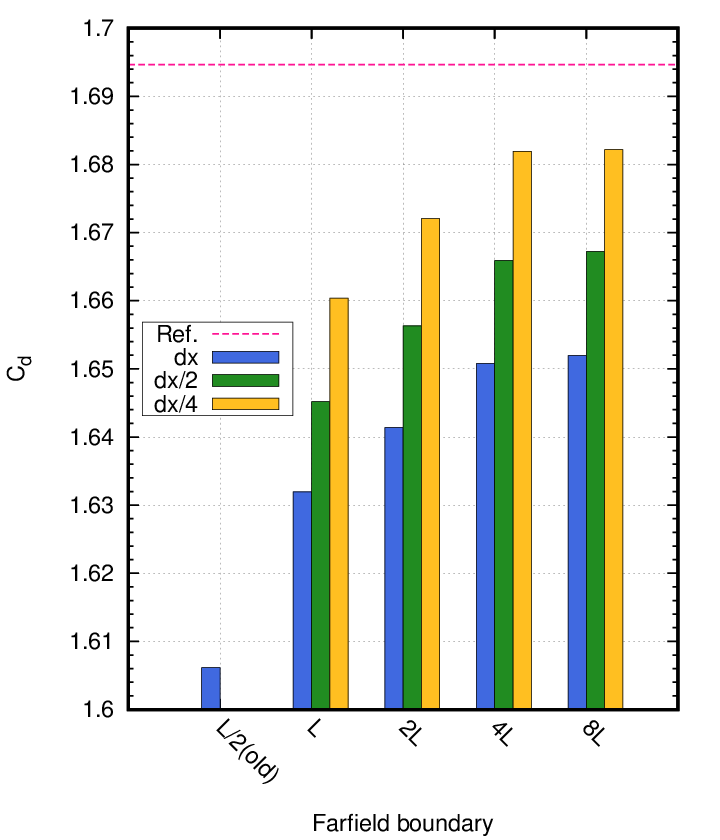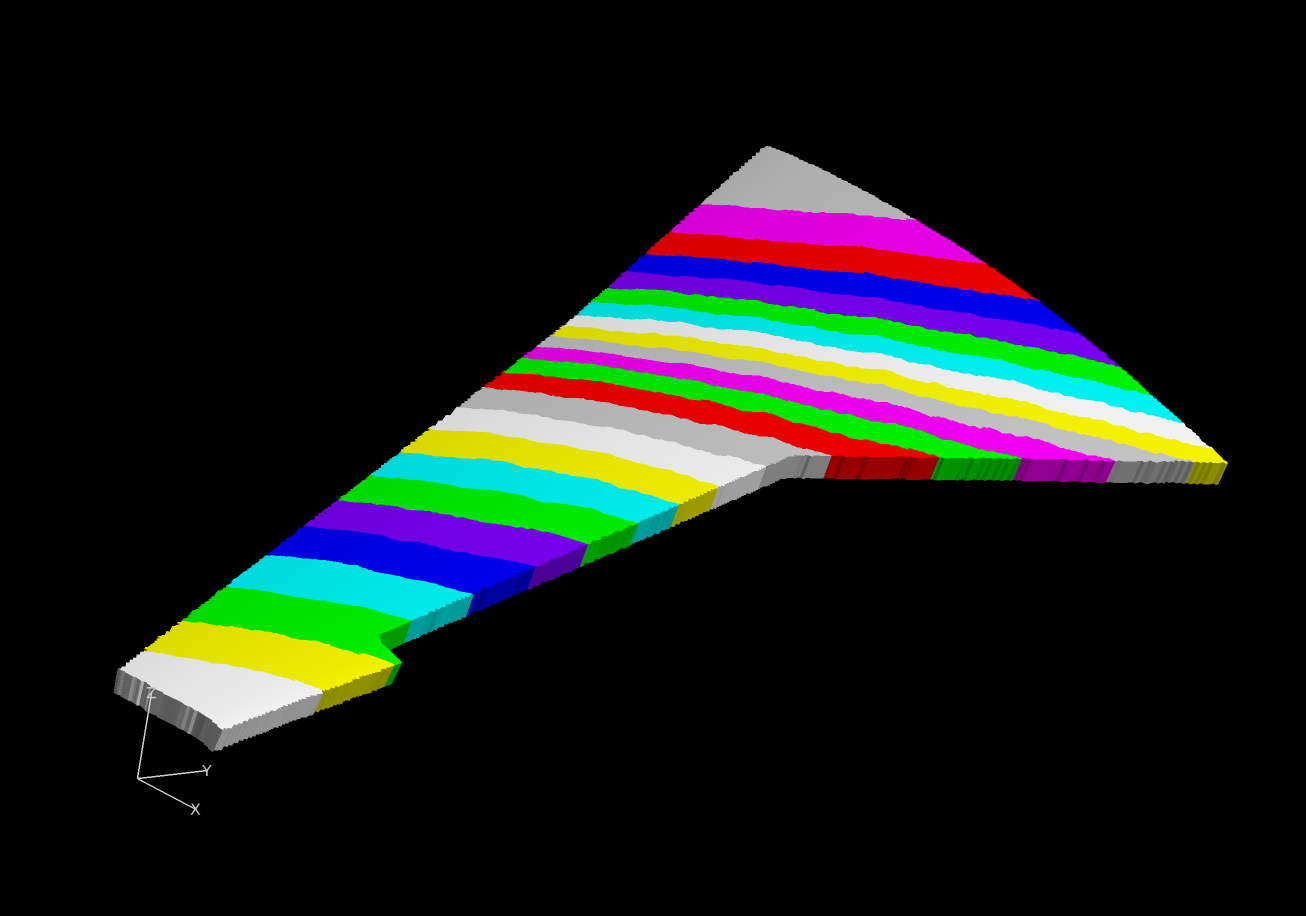MEXT Program for Promoting Researches on the Supercomputer Fugaku, Leading research on innovative aircraft design technologies to replace flight test,
JAXA Supercomputer System Annual Report February 2021-January 2022
Report Number: R21ECMP30
Subject Category: Competitive Funding
- Responsible Representative: Yuko Inatomi, Institute of Space and Astronautical Science, Department of Interdisciplinary Space Science
- Contact Information: Ryoji Takaki(takaki.ryoji@jaxa.jp)
- Members: Hiroyuki Asada, Aya Aihara, Kazuhiro Imai, Soshi Kawai, Masayuki Kakehi, Hiroshi Koizumi, Yosuke Matsumura, Hirotaka Maeyama, Ikuo Miyoshi, Ryoji Takaki, Yoshiharu Tamaki
Abstract
Realization of high-precision aerodynamic prediction by high-fedelity LES analysis around whole aircraft configulation for actual flight conditions.
Reference URL
Please refer to http://www.klab.mech.tohoku.ac.jp/fugaku/index.html .
Reasons and benefits of using JAXA Supercomputer System
It is possible to develop programs efficiently because JSS has the same architecture as the final target “Supercomputer Fugaku”,
Achievements of the Year
The object shape is expressed as an algorithm in the method that combines the hierarchical cartesian grid method and the immersed boundary method (IB method). Therefore, some ingenuity or method is required for the surface integration required to calculate the force acting on the object, and physical quantity distribution on the object surface . As part of the 2nd Workshop on Cartesian Grid-based CFD, some verifications were conducted for two-dimensional basic geometries and good results and grid convergency were obtained by using the method proposed here(Fig.1). At the same time, it was found that the oscillation in the surface physical quantity distribution was caused by the calculation error of the physical quantity at the Image Point(IP) set near the wall. The value of the physical quantity at IP is obtained by linear interpolation. If the grid resolution is coarse at the region near the wall, where large gradient of physical quantity exist, the linear interpolation error becomes large, and as a result, oscillation is seen in the surface distribution.
A overset grid was created by oversetting a BCM grid and a layer grid for the flow analysis around an aircraft high-lift configuration which has complicated geometry. The layer grid was generated on the upper surface of the main wing. Fig.2 shows the overset boundaries that communicate physical quantities between the layer grid and the BCM gid, which is the background grid. The color indicates each area devided into areas.

Fig.1: Grid convergence of drag coefficient of prism (horizontal axis shows distant of outer boundary, color of the bar graph shows the minimum cell size, “Ref.” shows the reference value obtained by using body fitted grid).

Fig.2: Overset boundaries that communicate physical quantities between the layer grid and the BCM gid(color indicates each area devided into areas).
Publications
– Non peer-reviewed papers
1) Ryoji TAKAKI, Verification of surface distribution prediction accuracy in immersed boundary method, pp115-124, Proceedings of the 2nd Workshop on Cartesian Grid-based CFD, JAXA-SP-21-009, 2022.2.15
2) Ryoji TAKAKI, Study on speed-up tuning for structured grid based CFD solver on PRIMEHPC FX1000, pp217-223, Proceedings of the 53rd Fluid Dynamics Conference / the 39th Aerospace Numerical Simulation Symposium, JAXA-SP-21-008, 2022.2.14
– Oral Presentations
1) Ryoji TAKAKI, Verification of surface distribution prediction accuracy in immersed boundary method, 3C02, 53rd Fluid Dynamics Conference/39th Aerospace Numerical Simulation Symposium, 2021.7.2.
2) Ryoji TAKAKI, Study on speed-up tuning for structured grid based CFD solver on PRIMEHPC FX1000, 2C05, 53rd Fluid Dynamics Conference/39th Aerospace Numerical Simulation Symposium, 2021.7.1.
Usage of JSS
Computational Information
- Process Parallelization Methods: MPI
- Thread Parallelization Methods: OpenMP
- Number of Processes: 1 – 48
- Elapsed Time per Case: 50 Hour(s)
JSS3 Resources Used
Fraction of Usage in Total Resources*1(%): 0.97
Details
Please refer to System Configuration of JSS3 for the system configuration and major specifications of JSS3.
| System Name | CPU Resources Used(Core x Hours) | Fraction of Usage*2(%) |
|---|---|---|
| TOKI-SORA | 22274375.08 | 1.08 |
| TOKI-ST | 66708.91 | 0.08 |
| TOKI-GP | 52.44 | 0.03 |
| TOKI-XM | 9762.26 | 7.03 |
| TOKI-LM | 15748.04 | 1.17 |
| TOKI-TST | 0.00 | 0.00 |
| TOKI-TGP | 0.00 | 0.00 |
| TOKI-TLM | 0.00 | 0.00 |
| File System Name | Storage Assigned(GiB) | Fraction of Usage*2(%) |
|---|---|---|
| /home | 781.10 | 0.78 |
| /data and /data2 | 38168.06 | 0.41 |
| /ssd | 2212.62 | 0.57 |
| Archiver Name | Storage Used(TiB) | Fraction of Usage*2(%) |
|---|---|---|
| J-SPACE | 3.76 | 0.03 |
*1: Fraction of Usage in Total Resources: Weighted average of three resource types (Computing, File System, and Archiver).
*2: Fraction of Usage:Percentage of usage relative to each resource used in one year.
ISV Software Licenses Used
| ISV Software Licenses Used(Hours) | Fraction of Usage*2(%) | |
|---|---|---|
| ISV Software Licenses(Total) | 188.49 | 0.13 |
*2: Fraction of Usage:Percentage of usage relative to each resource used in one year.
JAXA Supercomputer System Annual Report February 2021-January 2022


